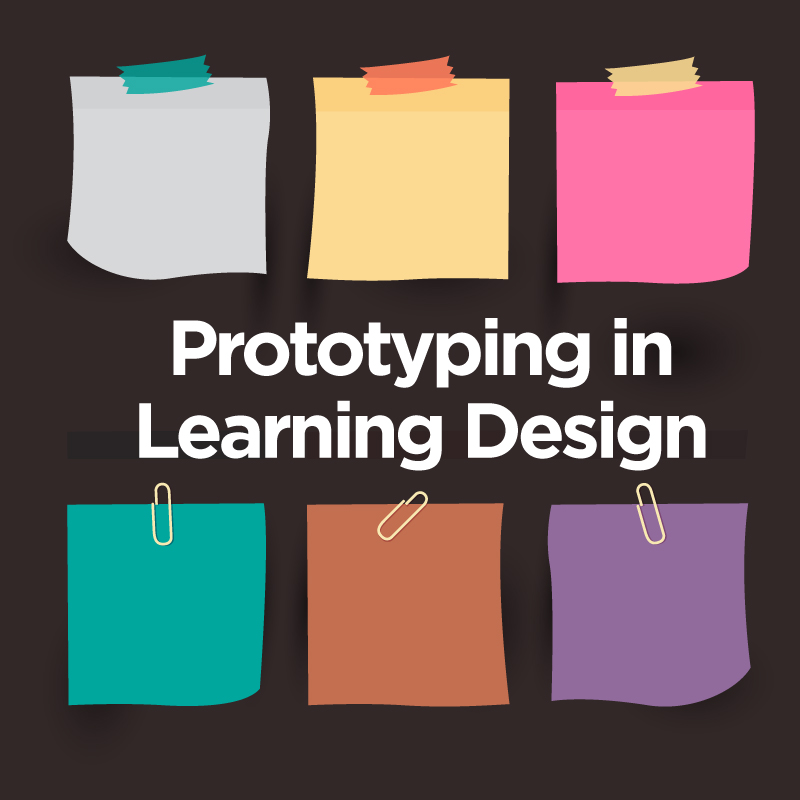The following is a two part blog post on prototyping used for learning design. Here in Part 1, I introduce what prototyping is and how I’ve used it as an instructional designer. In Prototyping Part 2, I highlight some ways to build and share your prototype.
I love my job as an instructional designer. It’s the ultimate career for those who love to learn, explore, create, and have fun. My days are filled with ideating, sharing stories, developing insights, creative consultations, and the most important aspect is that I “build” meaningful, authentic experiences with my clients.
We build the relationships through prototyping. Prototyping is one of my favorite methods of play because it allows me to ask hard design questions while establishing a trusting repertoire while obtaining instant feedback from my clients on their ideas. So what is prototyping?
What is prototyping?
Prototyping is a simple yet complex skill, form of play, that helps to “make your ideas come to life by building something rough and rapid,” states the IDEO workshop description “From Ideas to Action.”
Prototyping requires design thinking/experience that sets a certain style and tone for participants.
- Mindset: Build to think
- Disposition: Must be curious and creative
The goal in prototyping is not to create the end product or experience, it’s more to help you identify what you are building so it opens you up to expand upon ideas, explains Dr. D. Ian Heywood in his “Disruptive Thinking” article.
Why I use prototyping when designing a course?
Working on the front lines every day with faculty to cultivate their digital pedagogy, the process can be uncomfortable and stressful to unpack different learning frameworks, models, methods, effective tools, and forms of engagement into the course design process.
Prototyping allows our instructional design consultations to be FUN and ENGAGING through exploring and questioning. It’s a low stake way for us to visualize the course or idea. It also helps in developing a clearer understanding (roadmap) toward an end goal as well as gather useful insights from fellow instructors, designers, librarians, or other stakeholders.
Paper prototyping
My favorite type of prototyping is paper prototyping done in rapid iteration. It helps test your ideas out early in the design process (light user testing). It’s ideal to use during ideation to help demonstrate what you know and most importantly also helps identify what you don’t know. Building and questioning is the KEY during this exploratory phase.
This way of prototyping ideas can be messy, iterative, and it can evolve into using a variety of other tools like sticky notes, course design outlines, or online representation models. This allows for feedback and adjustments to your course design before implementation within a learning management system like MSU D2L or another similar tool.
If you want to learn more about prototyping, request an instructional design consultation to schedule an appointment with Keesa V. Johnson, johns253@msu.edu. We can discuss what works for you!






